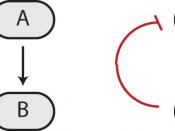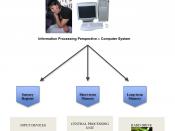Sports psychology.
Introduction.
For this assignment I am going to:
÷Recognise individual differences in terms of behaviour and sport performance.
÷Demonstrate an understanding of the psychological and physiological mechanisms of information processing.
÷Differentiate between learning theories and their application to teaching and coaching.
÷Identify the role of group dynamics within sport.
For these tasks I am going to use the sport of football and the skill of kicking a ball to answer the questions.
Task 1.
The central nervous system is where all the sensory information is sent and where reflexes and actions are coordinated. It consists of the brain and spinal cord only. Neurons (nerve cells) transmit electrical impulses very quickly around the body. The effectors are muscles and glands, which respond to the various stimuli according to the instructions from the central nervous system. The peripheral nervous system sends the brain signals to produce a movement. The structure is very important to the function because it helps detect any stimuli around the body.
There are five sense organs that detect various stimuli, they are:
1.Eyes - light receptors.
2.Ears - sound and balance receptors.
3.Nose - taste and smell receptors (chemical stimuli).
4.Tongue - taste receptors (chemical stimuli).
5.Skin - touch, pressure and temperature stimuli.
This system is adapted to allow movement and control of the body. It is responsible for reaction time as the sensors tell the brain that something is happening. The electrical impulses are designed to travel to the effecter as quickly as possible to make a fast response. For example when your playing football and you see the football on the ground ready to be kicked the eye sensor tells the brain the position, distance and speed of the ball so the body can react and kick it, The...



Comprehensive
A very good comprehensive essay. Covers the subject well.
Ps I did a level P.E. so know what I'm talking about
2 out of 2 people found this comment useful.